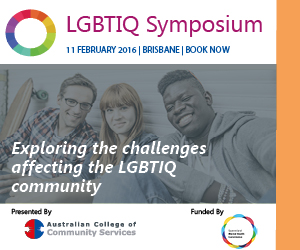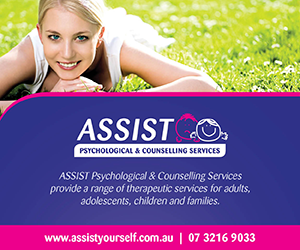THERE’S a photo of me from my 25th birthday party. Hair perfectly styled; I’m beaming; playfully dodging wayward sparks as my boyfriend adorns the cake. I look so carefree in that shot, I could have fooled even myself.
But I remember that day. I remember the jagged, half-finished thoughts colliding at speed inside my brain as my friends chatted and laughed. The forced chitchat, delivered with feigned nonchalance as within, the cacophony raged.
I remember running to the bathroom to pray, plead with this thing inside me: “Please, just give me one day off. I’m begging you. It’s my birthday.”

Looks can be deceiving. This happy photo of Katie on her 25th birthday belies how she was really feeling.
And I remember that night, contorted and sobbing under the dining table. My boyfriend crouched beside me, fear etched into his brow as I wailed that I couldn’t take it any longer. I remember my 25th birthday, because it was the day my anxiety finally broke me.
Australia has come a long way on mental illness awareness. Thanks to the efforts of organisations like Beyond Blue and The Black Dog Institute, our understanding of depression is more comprehensive than ever. But when it comes to the most common mental illness in the Western world, we’ve still got a long way to go.
Anxiety is too often mischaracterised as ‘just nerves’, dismissed as an annoyance, or playfully appropriated within popular culture: “I’m sooo OCD!”
Our knowledge of the symptoms tends toward the sensational: panic attacks, extreme hoarding, and phobias are fetishised on trash-TV, sufferers presented as weird or freaky.
As well as trivialising the pain of anxiety-sufferers, representations of this nature serve to obfuscate the reality of the illness. The most common anxiety symptoms; racing thoughts, a nagging sense of dread; are rarely depicted within popular media. They are therefore often mistaken for physical illness, or accepted as ‘just how I am’.
ANXIETY IS NOTHING TO BE ASHAMED OF
This was the case for me. At 20, my conception of anxiety disorders was wholly informed by TV. The thing that was steadily encroaching upon my life; the sickening worry, obsessive organising, the persistent, inexplicable dread; I didn’t have a name for that. I didn’t associate my strange rituals, like compulsively repeating a phrase thousands of times over in my mind, with anxiety. I simply thought I was a weirdo. Embarrassment kept me from revealing my affliction, and I soldered on, hiding the beast inside as best I could.
I now know that anxiety disorders take many forms, from social anxiety to obsessive compulsive disorder. I know that they are extremely common, and that symptoms are many and varied. I also know that they are treatable. I found solace in Cognitive Behavioural Therapy, but there are many excellent options available, from meditation to medication. Most importantly, I know that anxiety is nothing to be ashamed of.
But due to common misconceptions, many aren’t aware of these things. As I write, thousands of Australians are suffering with untreated anxiety. Like me, many will be aware that something isn’t right, but will be embarrassed to seek help due to the ‘weirdness’ of their symptoms.
When left untreated, anxiety can become all-encompassing. For Jayse Smith, what started as “worrying too much”, soon became a constant, pervasive feeling of impending doom. “I would sometimes get so worked up, I would be convinced my life was about to end right then and there,” explains the children’s librarian.
“I knew it was illogical, but the fear would get so bad, I would start gagging and coughing, and end up vomiting. It was hell.”
Research is revealing that untreated anxiety disorders can do permanent damage to the brain. Studies looking at the MRI scans of depression and anxiety patients have detected abnormalities in specific areas, such as the hippocampus (the memory centre), the cingulated (responsible for conflict-resolution) and the prefrontal cortex (associated with planning and decision making).
This isn’t a pretty picture, but it is a completely avoidable one. We must take steps to encourage those with untreated anxiety to seek help.
First, it’s time we did away with TV shows which mock and trivialise the illness — we would never make fun of depression on reality TV. Instead, let’s facilitate a culture of transparency, so that Australians are literate to the symptoms of anxiety.
Adam Higginson, a Melbourne sports psychologist, champions this idea: “We need to get a public conversation going about the realities of anxiety. It’s so important to combat stigma and stereotypes on mental illness.”
Anxiety can be extremely debilitating. It can leach all the pleasure out of life, replacing it with worry and shame. But it is treatable, and there is no reason for so many to quietly mask their pain. We have come so far when it comes to depression; let’s commit to making anxiety the next frontier in mental illness awareness.
For more information on anxiety disorders, check out Beyond Blue or The Black Dog Institute.
This article first appeared on ‘news.com.au’ on 21 February 2016.























